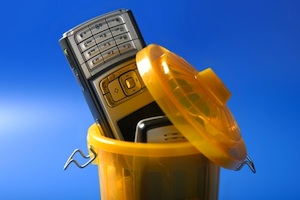Last updated April 12, 2019
 A cell phone that can let you know whether those leftovers in your fridge are actually still safe to eat could be the next thing to hit the shops. Researchers from the University of California in Los Angeles have created a new device that attaches to new and old cell phones and is able to detect small levels of E. coli in samples of liquid.
A cell phone that can let you know whether those leftovers in your fridge are actually still safe to eat could be the next thing to hit the shops. Researchers from the University of California in Los Angeles have created a new device that attaches to new and old cell phones and is able to detect small levels of E. coli in samples of liquid.
Outbreaks of E. coli can pose a massive threat to human health, particularly in the developing world. While the great majority of strains of E. coli are actually harmless, some strains, such as enterohaemorrhagic E. coli can result in serious food borne disease, says the World Health Organization. E. coli is primarily transmitted to humans through the consumption of contaminated foods including the likes of raw milk, contaminated vegetables and sprouts, and raw or undercooked ground meat products.
With detection devices that currently exist being complex and often expensive, an efficient and accurate detection device could well prove to be extremely popular and successful. There are over five billion cell phones on the planet. The cell phone detection device features glass capillary tubes with LED (light emitting diode) lights at either end.
“Our cell phone based platform would be very useful to bring advanced technologies to remote and resource poor locations,” says lead researcher Hongying Zhu. “(The cell phone) provides a ubiquitous platform for conducting micro-analysis wherever cell phones work.”